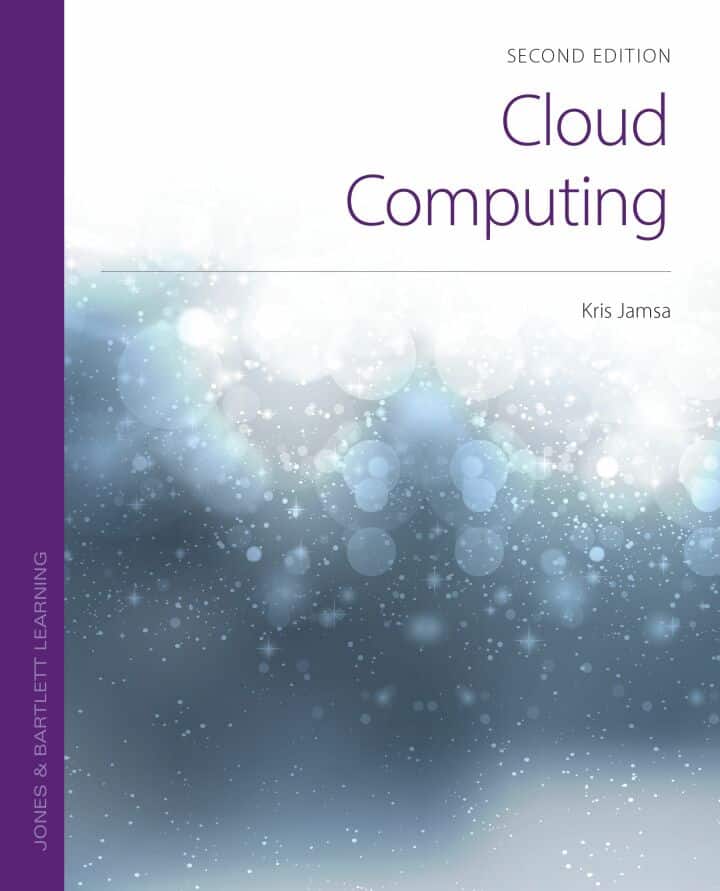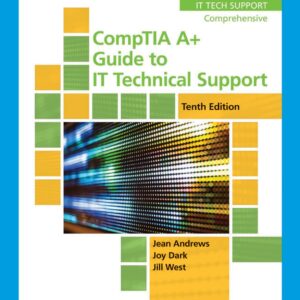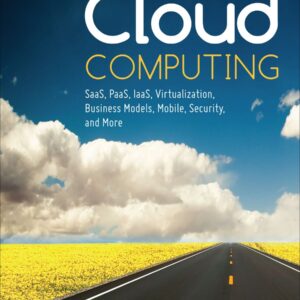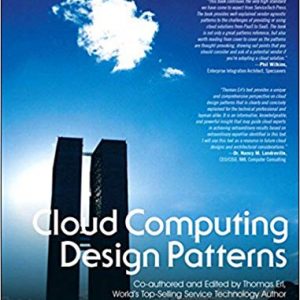For years, software developers and network administrators have used a picture of a cloud to represent the myriad communication details as messages flow across the Internet from one computer network to another. The abstraction that is the “cloud” has exploded to include now physical and virtual processors, data storage, software-as-a-service solutions, and mobile applications. Cloud-based applications and new capabilities emerge daily, bringing lower cost of entry, pay-for-use processor and data-storage models, greater scalability, improved performance, ease of redundancy, and improved business continuity. With those many advantages come increased security challenges and IT governance concerns. This ebook Cloud Computing, 2nd Edition (PDF) looks at each issue in detail. As you will learn, the dynamic nature of the cloud will undoubtedly continue, and we’ve only just begun to scratch the surface of what can be done with the cloud.
Chapter 1 Introducing Cloud Computing introduces the abstract nature of cloud computing and the factors that led to the evolution of the cloud. The chapter examines software as a service (SaaS), platform as a service (PaaS), and infrastructure as a service (IaaS) with real-world examples of each. The chapter examines the key advantages of cloud computing, which include scalability, redundancy, low cost of entry, and virtualization.
Chapter 2 Software as a Service (SaaS) examines browser-based SaaS solutions and their advantages. The chapter features real-world solutions such as SalesForce.com for customer relationship management, Taleo for human resource solutions, ADP for SaaS-based payroll processing, and many others.
Chapter 3 Platform as a Service (PaaS) introduces cloud-based hardware and software platforms that allow companies, large and small, to quickly and cost effectively move their applications to the cloud. The chapter examines such PaaS providers as Amazon, Google, and Microsoft.
Chapter 4 Infrastructure as a Service (IaaS) introduces the concept of a cloud-based data center that reduces or eliminates a company’s need for a large in-house data center. Because of the IaaS provider’s economies of scale, it can significantly reduce a company’s cost of IT operations.
Chapter 5 Identification as a Service (IDaaS) examines the use of cloud-based identity-management solutions to simplify user provisioning and resource access. With more solutions distributed across the cloud, IDaaS provides a way to facilitate the user’s sign-on process across solution providers.
Chapter 6 Data Storage in the Cloud examines the integration of cloud-based data storage and the evolution of network-based storage that led to its creation. The chapter examines several cloud-based data storage solutions that users can enable today at little or no cost. The chapter also examines several turnkey, low-cost, cloud-based backup solutions.
Chapter 7 Collaboration in the Cloud looks at cloud-based technologies that allow two or more users to work together to accomplish a task. The chapter shows the evolution of collaboration technologies from instant messaging to virtual meetings to shared documents that support simultaneous editing by multiple users.
Chapter 8 Virtualization introduces the use of hardware and software to create the perception that one or more entities exist, when they many not actually be physically present. The chapter examines solutions for virtual servers, desktops, and networks.
Chapter 9 Securing the Cloud examines the real-world issues where people (including sophisticated IT users) do not yet feel comfortable with placing their own data, or their company’s data, in the cloud. The chapter examines specific security threats and measures one should take to minimize the occurrence of those threats.
Chapter 10 Disaster Recovery and Business Continuity and the Cloud examines ways that the use of the cloud and its redundant resources improve a company’s ability to recover from and to continue operations after a disaster or severe event. The chapter examines common threats to business operations and ways the cloud can mitigate them.
Chapter 11 Service-Oriented Architecture looks at how the availability of web-based services is changing the way developers create programs and the speed at which they can deploy solutions. The chapter examines a variety of real-world web services available to programmers for integration into programs.
Chapter 12 Managing the Cloud examines the tasks a manager must perform after a company migrates its applications to the cloud, such as auditing logs, monitoring system performance, and identifying bottlenecks within the data flow.
Chapter 13 Migrating to the Cloud discusses considerations a manager should evaluate before migrating a solution to the cloud, such as avoiding vendor lock-in, identifying remote data backup operations and security considerations, preparing a budget, and integrating developer and user training.
Chapter 14 Mobile Cloud Computing evaluates whether mobile computing is driving the growth of cloud computing or vice versa. The chapter examines the “ecosystem” that is mobile computing as well as common cloud-based mobile apps.
Chapter 15 Governing the Cloud, discusses the role of IT governance and its extensions for cloud-based computing. The chapter examines the need for and ways to implement cloud-based internal controls.
Chapter 16 Evaluating the Cloud’s Business Impact and Economics examines how the cloud’s economies of scale and pay-for-use model will accelerate the ability for companies, large and small, to release cloud-based solutions. The chapter also evaluates the cloud’s impact on operational and capital expenses.
Chapter 17 Designing Cloud-Based Solutions discusses the fact that developers will simply pick up and move many existing applications to the cloud. In the future, however, developers should design cloud-based solutions to utilize scalability and redundancy better. The chapter examines many common design considerations and ways the cloud will affect them.
Chapter 18 Coding Cloud-Based Applications, examines how users and developers can place content in the cloud. The chapter walks you through the steps a developer performs to place a solution in the cloud.
Chapter 19 Application Scalability examines the two ways developers can scale applications: vertically, by using faster processors or more powerful servers, and horizontally, by supporting the ability to distribute processing better. The chapter looks at considerations designers should take when designing their applications to achieve scalability better.
Chapter 20 The Future of the Cloud examines ways the cloud will extend its reach into our cars, televisions, appliances, and even the clothes that we wear. By the end of the chapter, readers will realize that we have just scratched the surface of the cloud.
New to This Edition
This Second Edition prepares readers for the CompTIA Cloud+ Certification, which examines not only cloud specifics, such as SaaS, PaaS, IaaS, and other as-a-service solutions, but also key operations and functionality. The exam uses real-world scenarios to examine cloud deployment, optimization, scaling, security, and much more. At the end of each chapter, you will find a series of questions that target such key concepts to prepare you for the certification exam. Employers consider the Cloud+ Certification as a validation of your technical skills and knowledge. As you complete each chapter, take time to review the questions, and when you complete the book, you should take the exam.
Cloud Labs
These hands-on virtual labs provide immersive mock IT infrastructures where students can learn and practice foundational cybersecurity skills as an extension of the lessons in this text. For more information or to purchase the labs, visit go.jb learning.com/cloudcomputing2e
978-1284233971, 978-1284233988, 978-1284264937,, 978-1284264944, 978-1284233995, 978-1284264951
We highly recommend using the free Adobe Digital Editions (for Mobile devices) or Calibre (for Windows/Mac) to view the ePub ebook.
NOTE: This product only includes Jamsa’s eBook Cloud Computing 2nd Edition in the original ePub. A converted PDF is included as well. No access codes are included.






Reviews
There are no reviews yet.